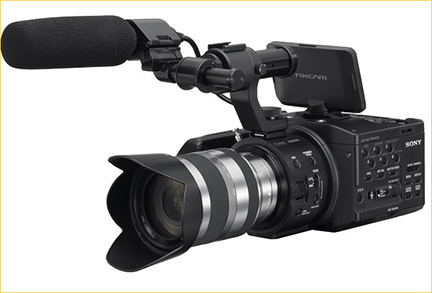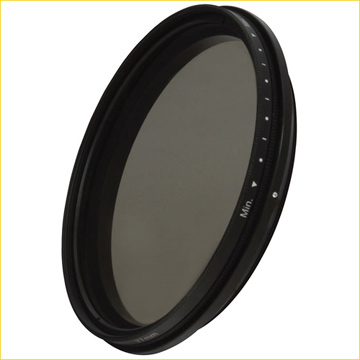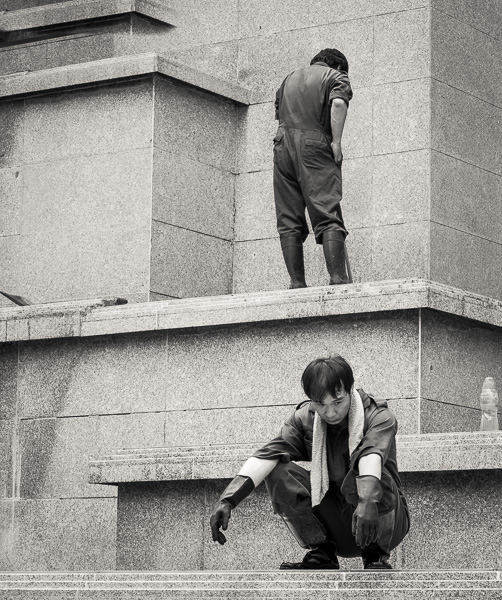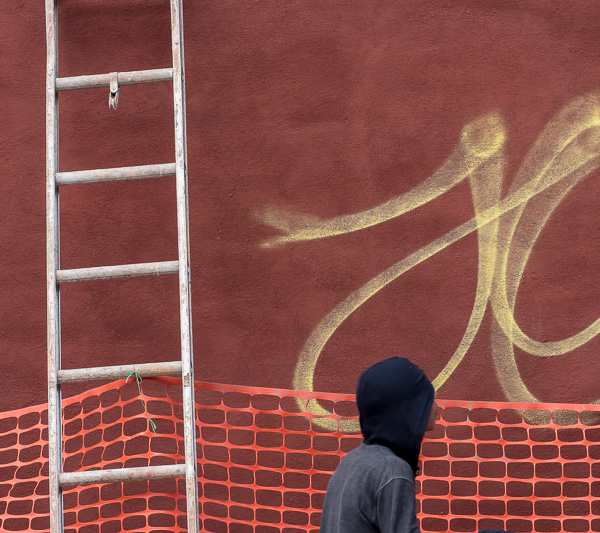Revolutions don’t happen overnight. It just sometimes seems that way. There are multiple revolutions going on at the moment when it comes to video-capable DSLRs and CSCs, mirrorless technology, camcorders, motion picture production, and just about every other aspect of how we shoot, transmit and consume stills and video.
Certainly the Canon 5D MKII, introduced in 2008, deserves credit, not necessarily as the first video capable DSLR, but as the one that captured the imagination of both photographers and film makers, and one which opened up the possibilities of large sensor video. Prior to then achieving the shallow depth of focus that 35mm motion picture film produced was impossible on video without spending hundreds of thousands or using awkward lens adaptors. Now, in just three years, we have not just large sensor video capture on every new DSLR and CLC, but also a new generation of dedicated video cameras that have DSLR sized sensors, yet which offer all of the capabilities of proper video cameras.
What Is Super 35mm?

The Sony FS100 and the F3 Share The Same Sensor
The use of the term “Super 35mm” has recently entered the lexicon for video camera. Originally it referred to 35mm motion picture film with the image area expanded from the Academy standard by about 32%. This was done by eliminating the analog optical sound track. This happens to be about the same size as the APS-C frame used by 35mm format stills cameras, but with a 16:9 aspect ratio.
Sony applies this appellation to two cameras at the moment, theFS-100, the subject of this review, and thePMW-F3. Canon applies it to their newC300/PL. Note that the term Super 35mm as applied to video cameras is a marketing term, not a standard, and the actual size of the sensor differs slightly between the two brands, with the Canon’s being slightly larger than Sony’s.
Compared to the much smaller size of sensors in previous generation video cameras Super 35mm gives the shallow depth of field that we all associate with motion pictures.
DSLRs and Compact System Cameras with APS-C and Full Frame sized sensors offer a similar advantage, of course. But these new Super-35mm video cameras are designed without the compromises needed to shoot both stills and video. Not having to double as stills cameras and offer users 16 – 18 – 21 and higher Megapixel counts they can have much large individual photo sites. In the case of the FS-100 and F3 these are more than 4X larger than in stills cameras with comparable size sensors. This means better dynamic range (11.5 stops measured, in the case of the FS-100), and lower noise (usableto ISO 8,000 and higher). More on this later in the report.
Of course because an HD video sized image does not need to be scaled down from a high megapixel count, most of the ills of DSLR video are avoided. The line skipping or downsampling that all DSLRs and CSCs need to do to get their images down to 1920 X 1080 for HD video create all sorts of nasty artifacts. This is the large sensor video DSLR trade-off, and it’s what Super 35 video cameras are designed to avoid.
NEX FS100 Basics

The basics, in addition to its high quality large sensor designed specifically for video, are that the FS100 has a Sony NEX lens mount. This is the same mount as on their NEX-5n and NEX-7 cameras. This is one of the differences between the $5,000 FS100 and the $15,000 F3. Both cameras use the same sensor, but the F3 has a PL lens mount (a popular standard for cine lenses). The FS100 can use a PL mount lenses via an adaptor, and there are also adaptors for Canon, Nikon, M Leica, R Leica and just about any other lens you can think of or need.
The F3 has other advantages and differences, including the use of SxS cards, and RGB 4:4:4 baseband output with S-LOG gamma for external recording.
The FS100 records to SD cards in AVCHD. It can also record to theFMU-128external flash memory recorder which slots into the side of the camera, allowing up to 10 hours of continuous recording. A 32GB SD card can shoot up to 2.5 hours. The camera can record to both the SD card and the flash memory drive at the same time, creating an immediate in-camera backup.
There is, of course, an HDMI output with timecode, and a wide range of external recorders can also be used. HDMI output is 8 bit 4:2:2 uncompressed.
Modular Design

The camera has a highly modular design. It starts with a basic box with a folding and swiveling LCD monitor. The battery (standard Sony sizes are used) slides into a large rear recess as does the SD card. There are numerous I/O ports all covered with folding doors and flaps. There is also a removable swiveling hand grip with start/stop button, a stove-pipe style monitor attachment for eye-level viewing, and a removable microphone arm / carry handle, with mic.
The advantage of this design style is that the camera can be stripped down to quite a small and light configuration for discrete hand-held shooting, hiking and the like, or fully kitted-out for tripod based production use.
Price
The FS100 currently sells for around $5,000 without lens, and $5,600 with the 18-200mm lens. This lens, which I regard as an almost must-have with this camera, is reported on seperately below.
This makes the FS100 one of the least expensive semi/pro large sensor camcorders available. The Panasonic AF-100 is similarly priced. The Sony PMW-F3 is around $14,000 while the Canon C300 is $16,000, and so are in quite a different price strata. Interestingly, the RED Scarlet costs around $16,000 ready to shoot (except for lens) and in my opinion is in a whole other league than any of the others.
As for a comparison between the AF100 and FS100, that’s meat for another meal. We currently own two AF100s, which we’ve been using for the past year in our video productions. These have been excellent cameras, and for someone with an investment in Four Thirds lenses would be the right choice. But for someone with NEX (or Sony A mount) lenses the FS100 would be the logical choice. Also, in addition to the smaller size of the MFT sensor, the AF100 does not have the large pixel size of the FS100 and C300, which handicaps it when it comes to low light performance. Simply put, it’s not Super 35 as defined by Sony and Canon’s new offerings.
Lenses
A common refrain among still photographers is that the NEX E mount lens line is still somewhat limited. This is changing rapidly, andSony has announcedthat they will have a total of fifteen E mount lenses available by the end of 2013.
Not to be overlooked is the LA-EA2 adaptor which allow the entire Sony A mount lens line to be used on NEX cameras, including the excellent Sony / Zeiss lenses along with the company’s very fine G series lenses. At this time (March, 2012) putting A mount lenses on the AF100 using the LA-EA2 works mechanically, but there is no iris control and no autofocus. But, Sony has a firmware upgrade for the FS100 scheduled for release shortly, and it will allow all automatic functions with A series lenses when using the LA-EA2 adaptor.
Of course there are also third party lens adaptors allowing Nikon, Canon and other popular DSLR lenses to be used. I am particularly happy with the Leica M mount adaptor, since it allows me to use my truly spectacular Leica M lenses on the FS100.

Zeiss CP.2 Primes
For serious film makers the most popular mount adaptor will be for PL mount, which opens up the whole world of professional cine lenses. These range in price from about $4,000 to $30,000 a lens. Their advantage to film makers, in addition to top optical quality, lies in the physical design. Aperture rings are steplesss, allowing for smooth manual iris changes. Focus rings are huge, allowing for smooth focus pulls, and there are very finely gradated focus scales allowing for precise focus pulls. Cine lenses also tend to be colour matched and also have matched maximum apertures, and are rated in T stops (actual light transmission, rather than the theoretical F stop).
But, don’t necessarily be seduced by the lure of PL mount cine lenses. Though they are typically excellent lenses, in many cases they are not any better optically than the best still camera lenses. Their appeal lies in their physical construction. So, unless you are pulling manual focus, require and use a precision follow-focus rig for theatrical shots, or simply can afford and like the “look” of true cine lenses, then consider buying Zeiss , Canon FD, Nikon or Contax primes. When it comes to zooms though, be sure that if you are using still camera lenses that they are parafocal. This means that focus is maintained when the lens is zoomed. Not a big deal with autofocus still lenses where the camera will always make sure that the shot is in focus, but not the case when using non-AF E mount lenses on an FS100.
Of course Sony’s own A series lenses, including their superior F series and of course their Zeiss series optics are excellent and a great match with the AF100 when the LA-EA2 is used.
In Praise of the 18-200mm
The Sony FS100 is available in two versions; with and without the Sony 18-200mm IS lens. Unless you already own one of these, perhaps purchased with a NEX stills camera, I would urge you to consider buying the version of the camera that comes with it. No, this is not agreatlens. It’s anOKlens though. It has its flaws. It is fairly slow at the long end, and suffers from some noticeable chromatic aberration, particularly at the long end. But, when it comes to bang for the buck, especially when acquired as part of an FS100 kit, it’s hard to beat.
With an 11X zoom ratio (27–300mm equivalent) it covers a lot of ground, and except in low light situations is a good everyday lens. It is worth having because it offers silent continuous autofocus on the FS100, and also has built-in stabilization. For hand-held shooting in reasonable light conditions this lens is amazing. When used with the FS100Active Stablizationis offered, something that is not found when this lens is used on NEX E mount series stills cameras. At least an additional stop of stabilization capability is on-tap. It is the only lens in the Sony line that has this capability when used with the FS100.
Neutral Density
Genus 82mm Variable ND
The FS100 is unusual among pro-level camcorders in that it does not have built-in neutral density filters. The reason for this is likely to keep the camera’s size down and also allow for the very shallow rear register distance of the E lens mount. This shallow depth means that virtually any lens ever made can be mounted, so it’s likely a worthwhile trade-off. But the flip side is that we have to use external ND filters on our lenses.
The simplest solution is to buy a large variable ND filter and a set of step-up rings. This way it can be used on any lens that you may own now or in the future. Using a variable ND even has its advantages, which become clear once you become used to using one. Having this fourth exposure variable (in addition to aperture, shutter speed and gain) means that you can work at the optimum shutter speed for the frame rate that you’re using and also set the optimum aperture, either for DOF or resolution. Then just vary the ND until the exposure is appropriate.
Frankly, after a few weeks of working with a variable ND I find that I prefer it to fixed internal NDs due to the increased versatility. Of course if you’re using a matte box then the use of appropriate slide-in NDs is possible as well.
Audio
One of the things that separates proper video cameras from video DSLRs and CSCs is the inclusion of proper audio capabilities. Pros and serious cinematographers know that good sound is fully half of almost any film production, from home movies to Hollywood.
The FS100 has a full compliment of audio capabilities, including dual inputs with XLR connectors and phantom power for mics that may need it. Sony provides a shotgun style microphone that mounts on the camera’s top handle. This mic is “OK”, but its mono only. The camera’s audio patch panel can be set to feed the signal to both channels for dual-mono recording, but a stereo mic is really needed. (Almost all camcorders come with only a mono mic, so the FS100 isn’t alone in this).
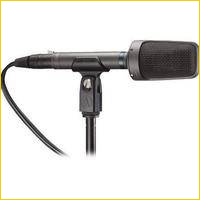
I have anAudio Technica AT8022 cardiod stereo mic which I much prefer to use, both on-camera and off. It is the same diameter as the FS100’s mic and fits nicely in the grip’s mic holder (remove the rubber padding from the Sony’s mic and use it with the AT8022). If you need on-location / on-camera audio then a mic like the AT8022 will make a huge difference in the quality of the audio you record. It comes with a 5 pin XLR, a 5 pin to dual XLR adaptor, and a 5 pin XLR to mini phone jack adaptor. The mic takes one AA battery for use with devices that don’t provide phantom power.
One criticism of the FS100 is that the XLR mic jacks are not located together in a block the way they are on most cameras. If you are using a single mic, such as the one that comes with the camera, there’s no issue. But with a stereo mic that requires the use of both XLRs, or a radio mic junction box with two feeds, the fact that one is located on the right hand side of the camera and the other on the left rear can mean that cables are hanging awkwardly around the body. This is my least favourite part of the FS100’s design.
There is a headphone jack on the rear with setable levels, and also small speakers for in-camera playback. But, there are no built in mics on the body. This is a serious omission in my view. The reason is that cinematographers are increasingly syncing multi-camera shoots using audio waverform matching.PluralEyesis popular, but a similar capability is also now found inFinal Cut X.
It is common to use a high quality external recorder to record a continuous audio track at an event, such as a concert or meeting. Then, when a video camera is started and stopped it’s easy to synchronise multiple cameras without the need for time code matching. This works fine if an external mic is used. If not then the FS100 can’t be synced in this way. I would urge Sony to add inexpensive small built-in mics, the type that are found in their still/video cameras, so that this type of syncing is always possible.
Control Interace
At first glance the FS100 looks intimidating and confusing. There are literally dozens of buttons scattered over the left side and top panel. But after a short while the logic of the control layout becomes obvious. Shooting controls on on the left while audio and playback controls are on the top.
I won’t run though every button and switch, otherwise we’d be here all day. It is worth noting though that the major controls, focus, aperture, shutter speed, and white balance each have the ability to be set to auto, as well as preset and full manual. There is also a Full Auto switch for run-and-gun style shooting that over-rides all manual settings at the flip of a single switch.
Autofocus and auto-iris automation wll depend on the lens used. With an E mount lens full automatic is available, while obviously with third party lenses aperture setting and focus are via lens rings.
Speeds
Another area where Super-35mm cameras like the FS100 surpass DSLRs is the available of variable speeds. Shooting speeds from 1 FPS up to 60 FPS are available at any frame rate. This means that time lapse as well as slow motion are available in-camera. The desired frame rate can be pre-set and then activated with the touch of a button.
There is also a special 120 FPS super-slo-mo mode available. But, it is at slightly reduced resolution and so may not always produce the quality desired. One cool capability through is that the camera can be set to be be triggered to record either 3 seconds of super-slow-motion after the shutter release is pressed or before it’s pressed. This means that you can wait for the moment of peak action and then press record, capturing the four seconds before you pressed the shutter. This four seconds then becomes 12 seconds of footage on playback.
Image Quality
It’s almost impossible to show video image quality online. Sites like Vimeo and Youtube recompress at fairly low bit rates. If you’re in the mood, and have the time and the bandwidth, you can download original resolution files. But, just about any worthwhile video project is going to be graded, and this tends to mask subtle differences.
With that said, below is a short documentary I shot in San Miguel de Allende, Mexico, on Fat Tuesday. It has been online lightly graded; necessary because the light levels changed during the time I was shooting near dusk (about 90 minutes) from bright to night.
But I am not alone among reviewers and users in praising the image quality from the FS100. The camera has been on the market now for about three quarters of a year and there are literally hundreds of clips, tests and even several full productions available online for people to view and comment on. Almost universally the IQ from this camera is praised.
I found it very informative when I reviewed theBlackmagic Hyperdeck Shuttlenot long ago. This recorder is capable of capturing either an uncompressed HDMI or SDI signal from cameras in up to 4:2:2 color space at 1,024 megabits / sec. That’s 10 Megabytes per minute. By way of comparison, the FS100 typically records (depending on frame rate) in compressed AVCHD at 24 Mbps. That’s a data rate 42 times lower that the Hyperdeck is capable of. Yet, even the closest comparisons show an almost negligible visible difference in overall image quality, even in a stressful green screen comparison.
I hasten to point out that this should not be interpreted to mean that all AVCHD cameras have similar capability. Anything but. Clearly in addition to differences in sensors, sensor sizes and scaling technologies there are AVCHD encoders and there are AVCHD encoders. The one in the FS100 is apparently a step above.
Firmware Upgrade
Sony was scheduled to release a firmware upgrade on March 22, 2012, but it has been delayed. When released it will answer quite a few user requests and add some worthwhile new functionality. From my perspective the most useful is allowing Sony A mount lenses to be used via the LA-EA2 adaptor with one-push Auto-iris and continuous 15 point Phase Detection autofocus.
The camera also becomes a so-called “world camera”, allowing PAL 50i, 50P and 25P recording as well as 30P, 60i, 60P and 24P. For cinematographers working on both sides of the Atlantic this is a real bonus.
Other enhancements will include ISO settings along with gain, availability of shutter angle, 4X and 8X expanded focus magnification and the ability to save camera profiles to SD card.
The Bottom Line
What I find so interesting about the current evolution of still cameras is that they have become so widely accepted for shooting video. Each new generation offers improved and more sophisticated video capabilities. The brand new Canon 1D X, 5D MKIII, Nikon D4 and D800/e all have enhanced video recoding modes, headphone jacks, audio metering and improved codecs. There’s no doubt that any of them is capable of being used to shoot all or part of a broadcast TV program or theatrical film. What they lose in absolute image quality compared to a Super 35mm camera (or RED Scarlet) they make up for in terms of convenience and low cost.
But, no one who regularly shoots motion projects will be under an illusion about the advantages of a dedicated video camera. For example, in our current video tutorial products we use two video cameras, Pansonic AF100s along two Panasonic GH2s. The footage intercuts nicely, but with a lot of work to balance them both in pre and post production.
As for the Sony FS100, the subject of this report, there is little to fault and much to like, and once the firmware upgrade is released it will be even better. There’s little doubt in my mind that it is currently the best value in a Super 35mm video camcorder and very competitive with cameras costing 2–3 times as much in terms of image quality. Whether it’s a better choice than a new-generation video-capable DSLR will very much be a personal decision by each user, depending on their particular needs.
March, 2012
Read this story and all the best stories on The Luminous Landscape
The author has made this story available to Luminous Landscape members only. Upgrade to get instant access to this story and other benefits available only to members.
Why choose us?
Luminous-Landscape is a membership site. Our website contains over 5300 articles on almost every topic, camera, lens and printer you can imagine. Our membership model is simple, just $2 a month ($24.00 USD a year). This $24 gains you access to a wealth of information including all our past and future video tutorials on such topics as Lightroom, Capture One, Printing, file management and dozens of interviews and travel videos.
- New Articles every few days
- All original content found nowhere else on the web
- No Pop Up Google Sense ads – Our advertisers are photo related
- Download/stream video to any device
- NEW videos monthly
- Top well-known photographer contributors
- Posts from industry leaders
- Speciality Photography Workshops
- Mobile device scalable
- Exclusive video interviews
- Special vendor offers for members
- Hands On Product reviews
- FREE – User Forum. One of the most read user forums on the internet
- Access to our community Buy and Sell pages; for members only.






